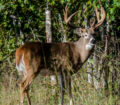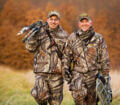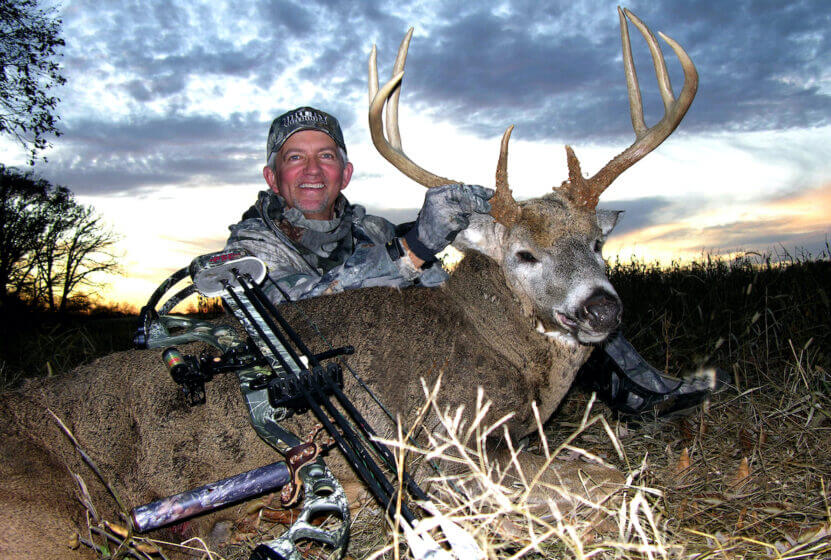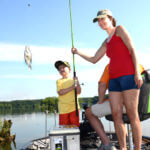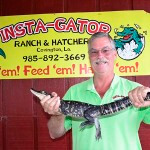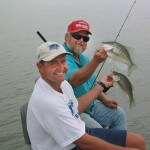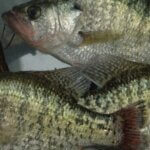Editor’s Note: The first week of deer season in any state usually creates the highest amount of hunting pressure in the deer woods. Thanksgiving, the Christmas holidays and the last week of deer season also are times of the year when the numbers of deer hunters drastically increase – and don’t forget weekends. So, if you hunt at these times of year, longtime, avid deer hunter Terry Drury, who with his brother Mark Drury created Drury Outdoors, offers these suggestions. Drury often has to hunt high-pressured deer and through his experience knows the tactics for taking them.
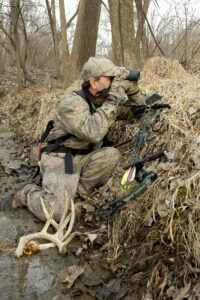 Other hunters often surround the properties where I hunt and inadvertently pressure the deer out of those hunters’ hunting areas into my hunting sites. These hunters may access their stands when the wind blows in the wrong direction. They also may walk or drive their vehicles into areas that they shouldn’t drive to and push the bucks out of the little hollows and small ditches where they concentrate.
Other hunters often surround the properties where I hunt and inadvertently pressure the deer out of those hunters’ hunting areas into my hunting sites. These hunters may access their stands when the wind blows in the wrong direction. They also may walk or drive their vehicles into areas that they shouldn’t drive to and push the bucks out of the little hollows and small ditches where they concentrate.
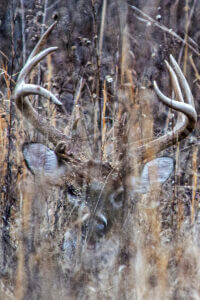 Big, mature deer often lie down in places where hunters least expect them to hold. So, when the hunter drives a pickup into these fields in the early-morning darkness and passes by a deer lying at the head of that draw, he’ll push the deer he wants to hunt out of that little draw. When hunting high-pressured bucks, the hunter needs to get to the hunt site, climb into his or her stand early and hunt it with the correct wind direction. When the deer gets bumped out of an adjacent parcel by other hunters, the hunter can intercept it. Hunting pressure by other hunters who don’t think about the mistakes they make will increase your success when you hunt high-pressured regions.
Big, mature deer often lie down in places where hunters least expect them to hold. So, when the hunter drives a pickup into these fields in the early-morning darkness and passes by a deer lying at the head of that draw, he’ll push the deer he wants to hunt out of that little draw. When hunting high-pressured bucks, the hunter needs to get to the hunt site, climb into his or her stand early and hunt it with the correct wind direction. When the deer gets bumped out of an adjacent parcel by other hunters, the hunter can intercept it. Hunting pressure by other hunters who don’t think about the mistakes they make will increase your success when you hunt high-pressured regions.
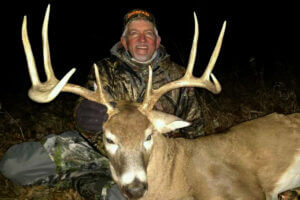 Don’t Call Deer in High Pressured Areas: The other hunters who cause the pressure around the land where Mark and I hunt almost always call, rattle and grunt too often. We mainly hunt deer in the Midwest – some of the most-highly-pressured land in the entire United States. Although we hear guys sitting on the perimeters of the surrounding farms grunting and rattling, grunting and rattling, we usually don’t make any calls. We go in to our hunting location and do just the opposite of what they do. Since those deer hear calls from October 1 all the way through January 15, we refrain from calling them. They hear calls every day and have grown immune to them. Calling just doesn’t work with deer in high-pressured areas.
Don’t Call Deer in High Pressured Areas: The other hunters who cause the pressure around the land where Mark and I hunt almost always call, rattle and grunt too often. We mainly hunt deer in the Midwest – some of the most-highly-pressured land in the entire United States. Although we hear guys sitting on the perimeters of the surrounding farms grunting and rattling, grunting and rattling, we usually don’t make any calls. We go in to our hunting location and do just the opposite of what they do. Since those deer hear calls from October 1 all the way through January 15, we refrain from calling them. They hear calls every day and have grown immune to them. Calling just doesn’t work with deer in high-pressured areas.
The deer may come in close to take a look at the caller, but they won’t get within bow range. You may have a deer come within gun range at 70 – 125 yards. He may walk directly downwind and check to see where that calling has originated. But nine times out of 10, he won’t walk within bow range – particularly a mature deer – because he’s grown up hearing those calls. Since he’s heard every call, he knows, “Hey, I need to circle downwind and see if two other approaching bucks have made those calls.” Mark and I resist calling in high-pressured areas, although we do rattle and grunt in places where deer don’t feel pressured.
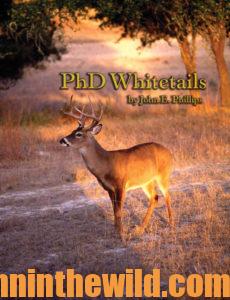 To learn more about hunting for deer, check out John E. Phillips’ book, “PhD Whitetails: How to Hunt and Take the Smartest Deer on Any Property,” available in Kindle and print at http://amzn.to/WIEUoo and Audible at https://www.audible.com/pd/PhD-Whitetails-Audiobook/B08VYMWS6J. You may have to copy and paste this link into your browser. (When you click on this book, notice on the left where Amazon says you can read 10% of the book for free and hear 10% for free). On the right side of the page and below the offer for a free Audible trial, you can click on Buy the Audible book. To see more of John’s deer hunting books, visit www.amazon.com/author/johnephillips.
To learn more about hunting for deer, check out John E. Phillips’ book, “PhD Whitetails: How to Hunt and Take the Smartest Deer on Any Property,” available in Kindle and print at http://amzn.to/WIEUoo and Audible at https://www.audible.com/pd/PhD-Whitetails-Audiobook/B08VYMWS6J. You may have to copy and paste this link into your browser. (When you click on this book, notice on the left where Amazon says you can read 10% of the book for free and hear 10% for free). On the right side of the page and below the offer for a free Audible trial, you can click on Buy the Audible book. To see more of John’s deer hunting books, visit www.amazon.com/author/johnephillips.
Tomorrow: Terry Drury – Know Best Times to Hunt Deer

